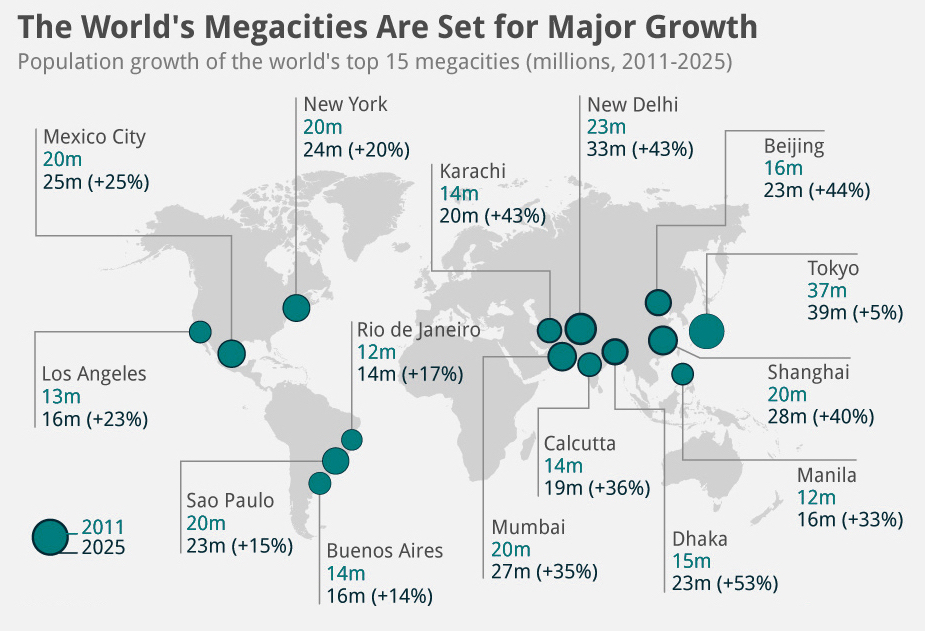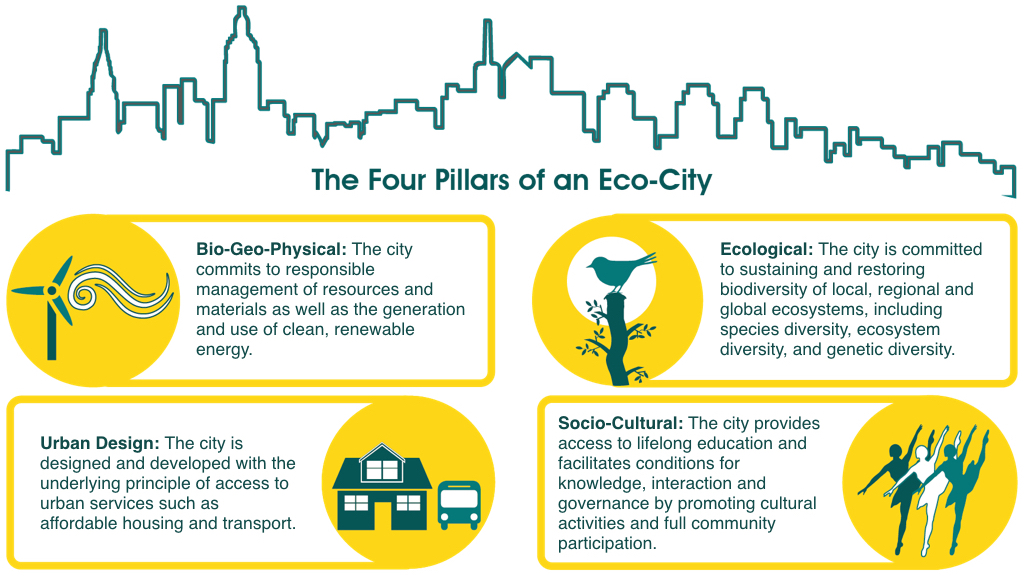Take a close look at any of the world’s major cities, from London to New York, Sydney, Tokyo, Shanghai and Bangalore, and you can clearly see humankind’s impressive rate of socioeconomic development. Urban centers have become a powerful source of innovation and prosperity in this rapidly changing world and, as a result, they have the profound opportunity and responsibility to become global leaders in sustainability efforts.
Global cities occupy 2% of the world’s surface and yet they are home to more than half of the world’s population (3.75 billion people), responsible for 75% of global energy consumption and 80% of CO2 emissions. By 2020, 66% of the world’s population is expected to be urban – a drastic increase from the 30% living in urban areas in 1950. The additional 2.5 billion people over the next few decades will further exacerbate the already significant challenges of resource consumption and environmental protection seen in the world today.
Source: Statista – UN Population Division, World Economic Forum
Before we delve into the solutions, it’s important to first understand the drivers behind such unprecedented growth in our urban centers. Cities are significant catalysts of economic development, serving as a hub for government, commerce, transportation as well as resource production and distribution. Urban centers currently provide two-thirds of the global economy. By 2050 this will increase to three-fourths, dwarfing the value of what many millennia of agrarian economic activity accomplished in just under a century. With urban living associated with higher levels of literacy, education, health, access to social services and employment, many people around the world move to these areas for greater opportunities and livelihoods.
One significant question that global governments and organizations face today is how the unprecedented migration to urban centers impacts our surrounding communities, environment and biological diversity. According to National Geographic, intensive urban growth can lead to greater poverty, with local governments unable to provide services to all people. Concentrated energy use leads to greater air pollution with significant impacts on human health. The World Health Organization has reported that 92% of the world’s population lives in areas where air pollution exceeds safety limits, causing an estimated 3 million deaths every year. However, this pollution, as well as physical barriers such as buildings, roads and other infrastructure, reduces urban tree cover and animal populations, which are also inhibited by toxic substances, vehicles and the loss of habitat and food sources. The Helmoltz Center for Environmental Research in Germany has calculated that rising urbanization has cost their local city five billion years of evolutionary history.
Making our cities more efficient will therefore have a significant impact in terms of global sustainability. Urban centers have a responsibility to drive the adoption of new green technologies and infrastructures to lessen their burden on the environment while at the same time satisfying the needs of their rising population and ensuring economic development. A human settlement modeled on the self-sustaining structure and function of natural ecosystems, an eco-city will provide healthy abundance to its populations without consuming more (renewable) resources than it produces, without producing more waste than it can assimilate and without impacting neighboring ecosystems.
Source: EcoCity Builders (2017)
While this is no easy objective, there are many cities around the world today that are leading the way by adopting compelling technologies and practices. Cities from Oslo to Sydney are setting objectives to curb climate change that exceed even their national targets. More than 2,500 urban centers have submitted carbon emission reduction plans to the United Nations since 2014, which include the implementation of car-free zones, fossil fuel-free building sites, reforestation initiatives and sustainable waste management practices. According to the United Nations Framework Convention on Climate Change, these plans will cut an additional 500 million tons of annual greenhouse gas emissions by 2030.
Reshaping cities for the long-term health of human and natural systems will be essential in achieving a sustainable future. The rise of the eco-city is well underway around the world and neem is well positioned to help drive innovation and ensure success in achieving true sustainability. How? Neem is ideal for reforestation efforts, with its high carbon sequestration rate of 14 µmol of CO2 m-1 sec-1, enough to eliminate 12.27 tons of carbon per year! Neem even serves as a filter for pollutants in the air and cleanses your skin and body of the toxins it absorbs from living in urban areas, defining its prowess as the tree of choice for the sustainable eco-city.

